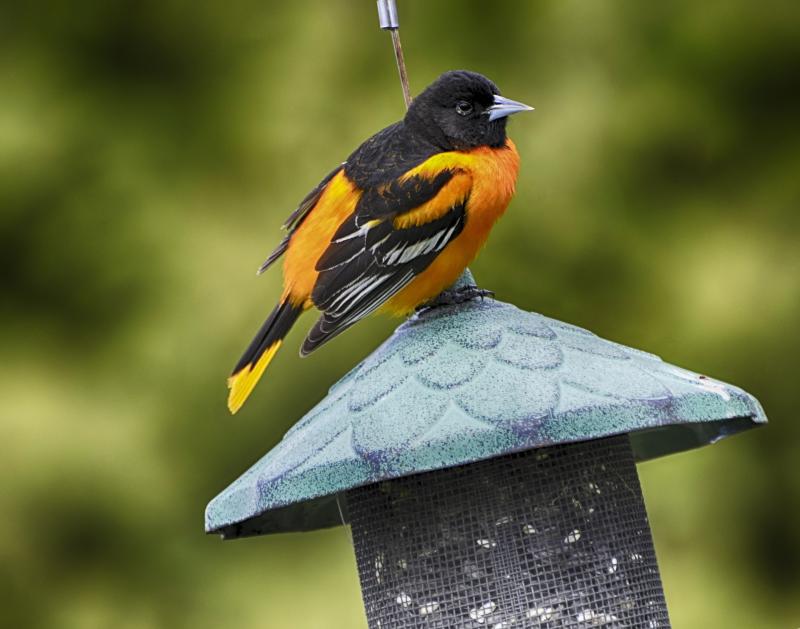
I have to admit that although I know a fair bit about landscape plants, I know very little about birds. But I still enjoy spotting meadowlarks and red-winged blackbirds as I drive to work each morning, along with the cardinals, mourning doves and American goldfinches I see at the feeders in my landscape.
One bird I would like to attract to my landscape, but have never seen, is the Baltimore Oriole. And apparently I'm not alone, because according to Birds & Blooms, the Baltimore Oriole is one of the 50 most wanted birds by backyard birders.
Identification
A member of the blackbird family, Baltimore Orioles are slightly smaller than robins. Males (pictured above) are a bright, fiery orange and black, while females (pictured below) and young birds have a yellow belly with olive green wings and head. These birds spend the summer breeding season in Nebraska, wintering in central and southern America.
When nest building, orioles prefer tall, leafy deciduous trees on the edge of woodlands, river banks or small groves of trees, not deep forests. And they are well-adapted to living in association with people, since they often nest and feed in parks, orchards or backyards.
Elms are one of their preferred trees for nesting, so planting one of the new Dutch elm disease resistant American elm hybrids would provide a good nesting site. But orioles will also nest in maples, sycamores and willows.
Plant for Orioles
Orioles are primarily insect eaters, which is what they feed their young. To preserve insect populations for your orioles, use insecticides in your landscape very sparingly. But they also love dark-colored fruits like mulberries, raspberries, grapes, serviceberry, and dark red cherries. Consider adding these landscape plants to your landscape to provide food sources for orioles.
- Cherries - Both tart or sweet cherries will attract orioles, and wild cherries like pin cherry or chokecherry.
- Grape - Use cultivars with dark colored fruits, like 'Concord'.
- Raspberry & blackberry - Look for black or dark purple colored cultivars.
- Serviceberry - Shadblow serviceberry, Amelanchier canadensis, produces juicy black fruits in June and also has great fall color.
Flower nectar is another lure you can use to attract them to your yard. They will visit flowering trees or vines in search of flower nectar. However, since they are bigger birds and cannot hover like hummingbirds do, they need a sturdy branch to perch while feeding.

Of course most birders know that Baltimore Orioles also love grape jelly and oranges, and that providing these treats is a great way to lure them to your yard. Specially designed oriole feeders are available, but a small flat-bottomed, hanging birdbath also makes a good place for oranges and jelly. Be sure to change the orange halves every day or two, to prevent them from rotting. Clean the jelly feeder every 2 to 3 days too, and provide new jelly to prevent the development of harmful bacteria.
Experts say that timing and patience are key to attracting orioles. If your food supplies are not available when birds first move into your area in spring, then you may not be able to attract them all summer. Place your feeders out where birds can see them, and be patient.
For more information on Baltimore orioles, visit All About Birds.
Search Our Archive
Associated Video
Feeding Birds
UNL Extension Landscape Horticulture Specialist Kim Todd talks to Dave Titterington about selecting good feed for wild birds.<br />
<br />